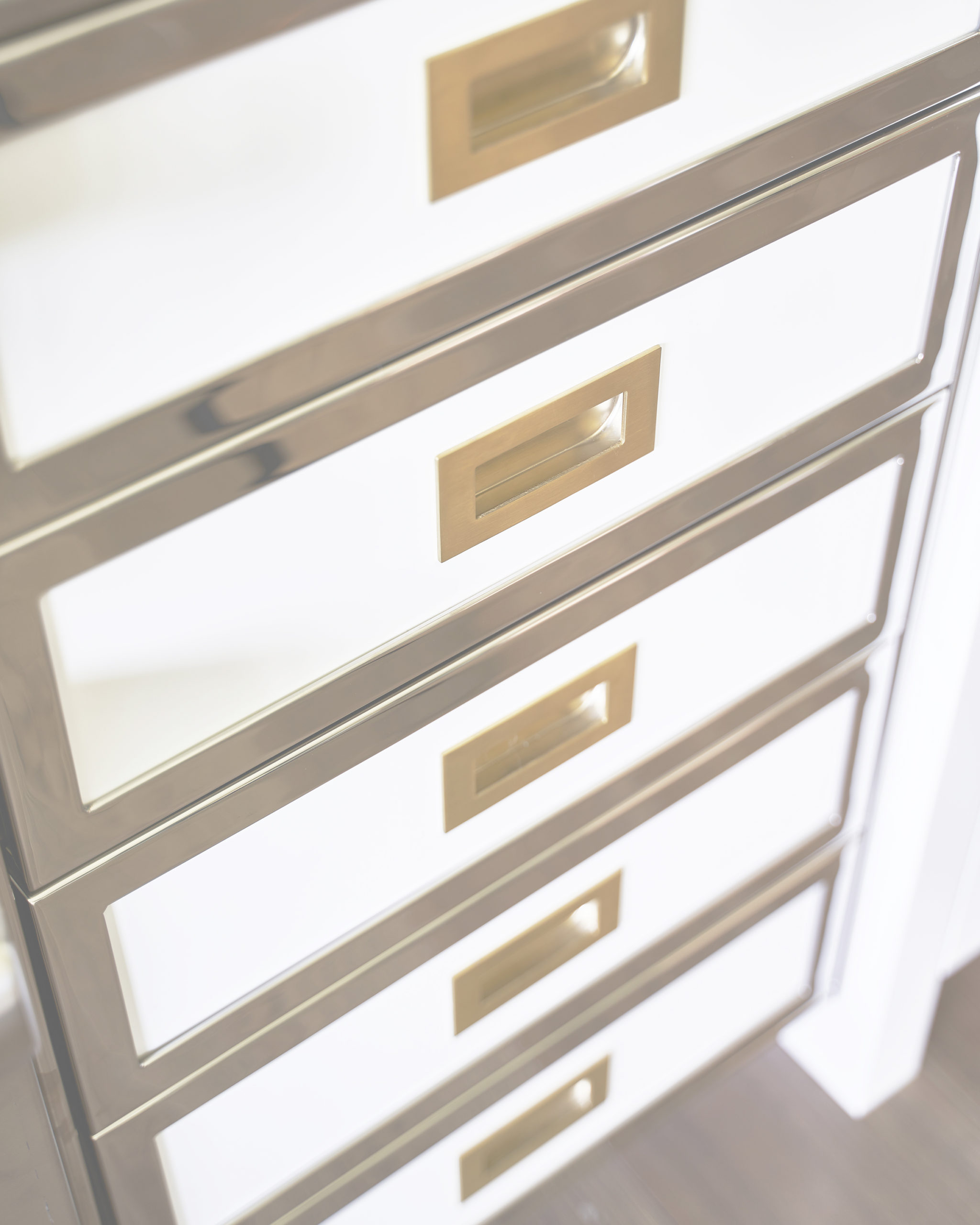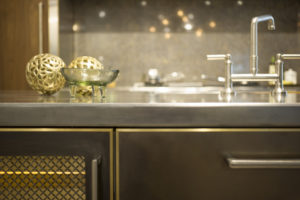
Here, we’ll discuss the design benefits of mixed metals – and we’ll list some important dos and don’ts when selecting them!
Avoiding mixed metals in your home is a thing of the past.
Today, designers no longer rely solely on monochromatic metals in their spaces. Now, it is commonplace to see mixed metals embraced in every room of the home, from the bedroom to the kitchen.
So why is mixing metals in your home a good idea?
Combining different metals such as steel, nickel, chrome, brass, gold, or iron is a great way to add depth and visual richness to a space. Utilizing these different metals properly gives your room a layered, textured look and can add some wonderful accent colors to support your space’s overall design and color palette. It can be intimidating to think about where to begin with metals as there are many options and different finishes, but with the proper know-how, it can be a fun, exciting project. Consider the following dos and don’ts when utilizing mixed metals.
CONSIDER THESE DOS AND DON’TS WHEN UTILIZING MIXED METALS:
DO: Consider your color palette
Always consider your room’s color palette when selecting metals for the space. Cool metals such as stainless steel, nickel, or chrome will pair well with cool hues such as greens, grays, and blues. Warm metals like gold, brass, or copper will pair well with warmer hues such as beiges, taupes, whites, and browns.
DO: Utilize different finishes
Selecting metals with assorted textural finishes can add incredible visual richness and depth to your space. Some different finishes to utilize include matte, brushed, polished, satin, and hammered.
DO: Choose a primary metal
When mixing metals in your space, it is best to select one metal you’d like to highlight the most, and then choose one or two other metals to complement or contrast it. An example of this would be choosing brass as your primary metal, and complementing it with a few gold and bronze accents.
DON’T: Go overboard with your metals
You don’t want mixed metals competing for attention in the same space – be careful not to add too many different metal accents to your room. Try to be aware of how eye-catching the metals are in terms of the attention it brings to itself as opposed to how well it complements the overall color scheme and design of the space. Your mixed metals should be subtle and cohesive. A good rule to follow is to avoid exceeding more than three different types of metals in the same space.
DON’T: Choose metals that are too similar
If you select metals that are all too similar in color and tone, you can end up with a space that appears too monochromatic and metallic-heavy. Aim for some moderate contrast and tones that will complement your room’s overall design scheme.
DON’T: Be afraid to blend warm and cool tones
While you can stick to warm toned mixed metals or cool toned mixed metals in your space, don’t be afraid to utilize opposing tones for a nice pop of color or texture. Utilizing an opposing metallic tone can help balance the overall temperature of the room. For example, in a white kitchen with stainless steel hardware and appliances, brass pendant lights can provide a rich pop of color and warmth.
In conclusion, utilizing mixed metals is a fun way to add visual richness and layered elegance to your home with complementary textures and colors. Always be mindful of how many different metals you are utilizing in your space, and how they will affect your room’s overall design and color palette. As long as there is awareness and intention behind your selections, you can’t go wrong with mixed metal details!






